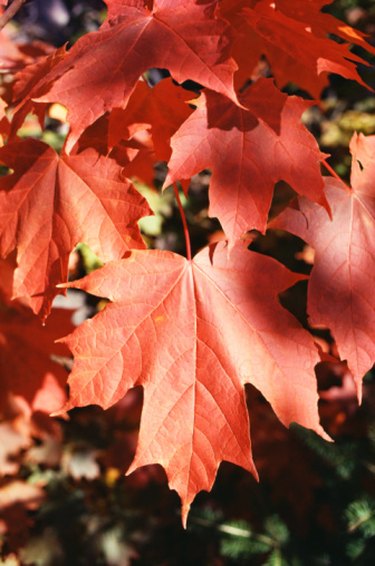Things You'll Need
Pruning shears
Fungicide
Gardening gloves
Protective eyewear

Prized for their display of fiery fall foliage colors, maple trees are suitable for diverse settings. They are also susceptible to a fungal disease called powdery mildew that can cause cosmetic damage and diminished health. When you notice what resembles a white powder on your maple leaves, you are looking at the telltale sign of infection. Home gardeners should snap into action as soon as symptoms appear to prevent the damage, which includes yellowing, distortion and early drop of leaves.
Step 1
Provide consistent, appropriate care to your maple tree as healthy plants avoid and heal from diseases with greater success than weakened trees. Grow maple trees in areas that provide full sun to partial shade. Cultivate your tree in well-drained soil high in organic content, unless you are growing a red maple that thrives in wet soil. Good drainage is essential as wet conditions encourage fungal growth.
Video of the Day
Step 2
Mow around trees carefully to avoid creating wounds through which fungi can enter.
Step 3
Employ cultural controls before chemical to avoid causing further damage to your maple tree. Use drip irrigation for your watering method to avoid overhead irrigation that creates the wet plant surfaces fungi need for growth. Keep soil moist and increase irrigation if drought occurs, watering to a depth of 8 to 12 inches.
Step 4
Prune away and destroy affected plant parts to decrease disease severity and inhibit the likelihood of spreading. Collect and destroy plant debris as well to keep the disease from spreading further throughout your landscape or from re-infecting your maple tree.
Step 5
Apply a fungicide to help control disease and, primarily, to avoid powdery mildew from recurring. Spray your maple tree with a chemical fungicide with the active ingredient triadimefon or propiconazole, according to the Ohio State University Extension. Apply the fungicide once every one to two weeks.
Tip
Wear gardening gloves and protective eyewear to prevent injury when handling sharp tools or chemicals.
Video of the Day